While still in a maritime college, a deck cadet often wonders as to what his shipboard duties exactly are. Though there is no specific guidelines or deck cadet job description, the common answer to this intriguing question at college is that a cadet must assist the deck officers in the day-to-day operations of the vessel.
Maritime books don’t really outline the duties expected from a trainee officer and rather harps on the theoretical aspects of onboard training.
Indeed, there are excellent books on the theory and practice of seamanship (& on deck cadet training) but the practical experience gained as a cadet onboard ship is better than any bookish knowledge.
It is therefore important that deck cadets have a general overview of the duties that are performed when on board ships. Of course, these are general guidelines and the jobs may vary from ship to ship.
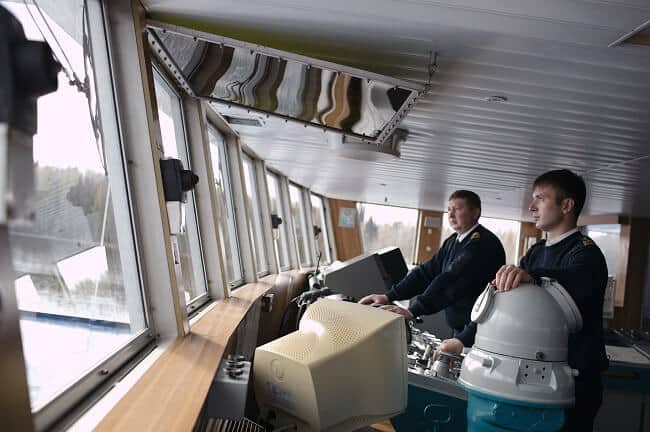
Credits: darn13/depositphotos.com
Below mentioned are ten important duties that are required to be performed by deck cadets on almost every type of ship.
1. Tank Soundings
Almost all deck cadets are asked to check tank soundings on a regular basis. Generally taken after the 0400-0800 watch (before or right after breakfast), soundings are very crucial for ensuring the stability of the vessel. The fact that the ship’s stability is dependent on the total ballast being carried, makes a deck cadet realise the high level of responsibility given to him.
Taking soundings must be learnt to the highest degree of precision so that the job becomes easier and executed swiftly. Knowing the depth of all the tanks also saves a lot of time. At ports, soundings are extremely crucial to the loading and/or discharging of the cargo and should not be meddled with at all. Fabricating the readings can be detrimental to the safety of the ship and its crew.
2. Ship Maintenance
All cadets who have served onboard will know that an area within the ship is designated to the deck cadet for maintenance and upkeep. Generally, one deck (or a part of it) of the superstructure is assigned to the cadet. Maintenance of that includes overall cleanliness and reporting of any abnormalities within the area.
3. LSA/FFA Maintenance
Thorough maintenance of the life saving appliances (LSA) and fire fighting appliances (FFA) is extremely important. Generally a part of the 3rd Mate’s duties and responsibilities, this work is assigned to the cadets so that they learn the procedures of noting down expiry dates, carrying out repair work, checking for any defects, emailing the company for ordering new products etc. In the process, a cadet ends up learning a great deal about how each equipment functions and also a lot about the lifeboats, liferafts, pyrotechnics, SOLAS Regulations etc. All such information ends up being extremely useful when appearing for the 2nd Mates examination.
4. Deck Work
Assisting the ship’s bosun in everyday deck work is embedded into any cadet’s daily schedule. This is basically grounding work, seemingly unimportant at the start, but builds the framework for the coming years as an officer. Work on deck including chipping, painting, grinding etc. is carried out to maintain the structural integrity of the deck, along with some rope work (e.g., splicing) that gives cadets the right aspect towards good seamanship.
Also, as all cadets will tell you, the job of stenciling various parts on deck is the universal designated duty of a cadet!
5. Berthing/Unberthing Operations
When a vessel goes alongside (or casts away), it’s normally “all hands on deck”. The entire deck populace is present at their respective stations to get the vessel to berth/cast off close to perfection. A cadet starts out at the stations as a sort of a rating, doing mainly the physical work. As time goes by and experience is gained, his job switches to more of a supervisory nature, wherein the cadet is expected to relay the orders of the Master to the ratings, ensuring that the operation runs smoothly and in order.
6. Pilotage Operations
A cadet’s role during pilotage varies with the time he has spent onboard. Initially, a cadet assists the ratings in rigging the pilot ladder and lowering the gangway for the pilot to board, along with other related processes during pilotage. The process also involves learning, first hand, the precise construction of the pilot ladder as per Regulations (important when appearing for the 2nd Mates examination). Gradually, once the Master deems the Cadet to be relatively well versed with the vessel’s operations, he is called on the Bridge to assist the duty officer with the different pilotage paperwork, e.g. printing out and filling the pilot card, plotting the position, filling the radio log (under supervision), observing the steering etc.
7. Port work and Cargo Operations
Being a trainee officer slated to sail as a 3rd Mate upon completion of the training period, a cadet is expected to be vigilant while in port. Work in port includes assisting the 3rdMate with paperwork (Bond store, crew declaration etc.), i.e. keeping them stamped, signed and ready with a fair number of photocopies.
Watches also have to be kept in port; this includes monitoring the cargo being loaded/unloaded (involves noting down precise timings of the start and end of loading/unloading, every time it happens). Normally, the cadet is made responsible to keep a tab on the tank soundings with continuous feedback to the duty officer on the portable VHF handheld/ walkie-talkie.
8. ISPS Watch
A very integral part of the port watch, an ISPS watch is pivotal to the security of the ship. With the norms pertaining to ship security getting stringent by the day, the ISPS watch has become one that has to be taken rather seriously.
A cadet is normally assigned to monitor the entry and exit points of the vessel. Usually stationed at the gangway, it is expected from a cadet to keep a log of all the persons entering and leaving the vessel; this includes all shore personnel as well as the ship’s crew (going on shore leave). IDs must be checked and logged in the ship’s ‘Visitor’s Log’. If such a system exists onboard (differs from company to company), a ship’s numbered ID must be provided to keep a track of the person even more precisely. Bags and suspicious objects must be checked thoroughly. A cadet, being an officer in the making, is also expected to usher in various officials (PSC Surveyors, Coast Guard, Medical/Health Inspectors etc.) to the ship’s office. Informing the duty officer of the particulars of the person being brought in is crucial and comes naturally after having spent enough time onboard.
9. Paperwork At Sea
All seafarers will agree that paperwork has increased many times over and so has the stress and irritation that comes with it! A cadet is expected to be a helping hand to the Chief Mate when it comes to the different checklists, familiarisation lists, key logs etc.
Updating of the Muster lists and the cabin key log are generally handed over to the cadet when there are new on signers. Making photocopies of various lists are almost always the sole job of a cadet! (And sometimes the number is extremely large). Not to forget the thing that has become ubiquitous on almost all vessels- The Watch & Rest Hours- to be distributed to all on time; another universally allotted job of the deck cadet.
Although not directly part of mainstream paperwork, the numerous discontinued charts that are used for stencilling are also to be cut out, close to perfection by the deck cadet!
10. Navigation
Perhaps the most important aspect of being a cadet, navigation is the very purpose that the ship is in business and officers/ratings are employed!
Not having a valid Certificate of Competency (COC), a cadet is naturally not allowed to keep a bridge watch independently. However, under the guidance and supervision of a certified officer (almost always it is the Chief Mate), a cadet is expected to learn the science and art of navigation, which would eventually help him in becoming a successful deck officer. Theoretical knowledge of the COLREGS, Celestial Navigation, Bridge Equipments, Seamanship, Chartwork etc. all culminate into this one grand attempt at safe navigation of the vessel.
Normally, the Chief Mate takes time out during the bridge watches (0400-0800 and 1600-2000) to teach a cadet about the ongoings in the bridge and also tests his knowledge he has received during his deck cadet course on myriad aspects of the merchant navy. Gradually, the Chief Mate and eventually the Master develops a trust factor (provided the cadet is worth the salt), which enables them to delegate work to the cadet.
As daunting as it may seem, cadetship actually is the most fun part of one’s shipping career. With no responsibility at hand and not being answerable under legal bindings, cadetship is the time to learn and imbibe. Everyone that has gone through will look back at their time fondly (except the extreme cases!) and with pride. Donning the uniform as a young 20 something is a matter of respect. Provided a cadet is diligent in his duties, he can be assured that he’ll be respected by all onboard and the time he spends as a cadet will be full of lifelong memories.
Want to learn duties of deck officers at each level? Checkout our ebook “A Guide to Become Successful Deck Officer“
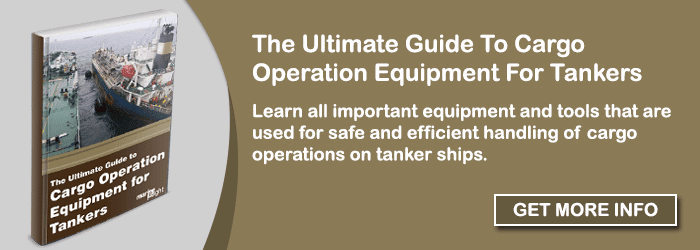

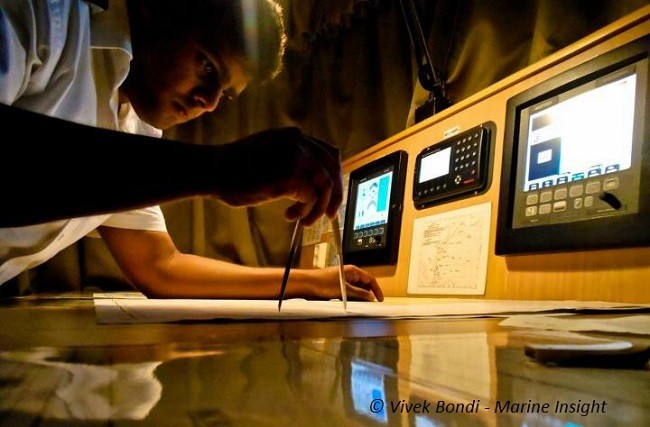
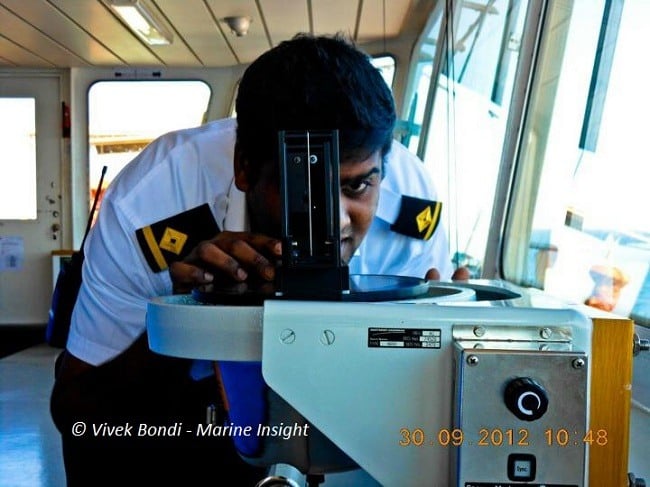
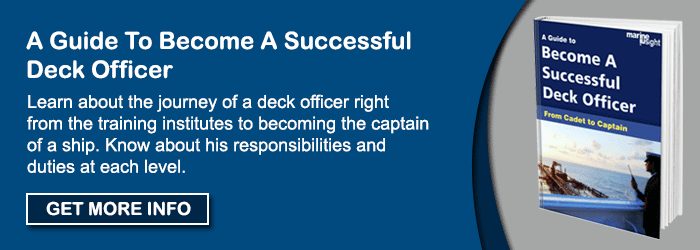
No comments:
Post a Comment